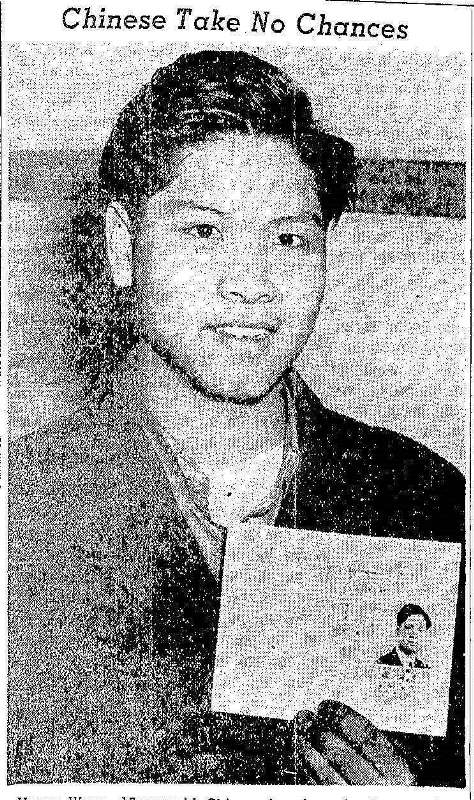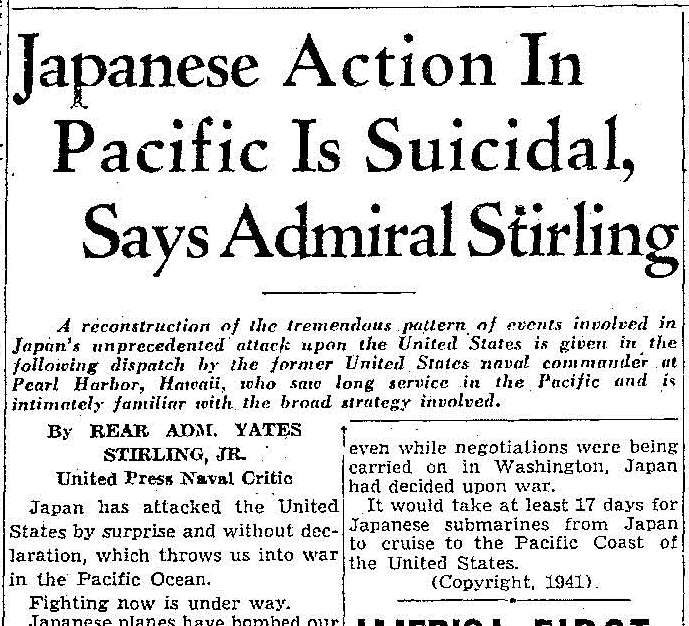Context Adds Complexity: Before and After the Attack on Pearl Harbor, as Seen in Major American Newspapers in the Pacific Northwest
Reliving a moment in history through the pages of America’s Historical Newspapers takes the event out of its place on the timeline of history and reinserts it into the messy context of its era. The details of the event aren’t altered, but what surrounds it makes you think, “Oh wow, that was going on at the same time.” Or, “Man, I didn’t know he was involved in this.” Or, “I never knew that happened.”
Sometimes even events that everybody knows about are seen in new ways. The response to the attack on Pearl Harbor is a case in point. One of the odd things is that Pearl Harbor seems to exist almost outside of the wartime context, even though Japan was at war in China. The bombs falling on Hawaii and the sinking of our ships dominate our memory of it, even though it had a greater role in Japan’s war strategy which sometimes seems forgotten.
In the pages of U.S. newspapers, life was going on as usual in the Pacific Northwest in the early 1940s. Sure, there was fighting in Europe and China, but that was there. Front pages had articles about the battles in Europe and the Pacific, but they weren’t solely devoted to it. On December 1, 1941, the Seattle Daily Times blared this headline over their nameplate, “Japs Hesitate, Talk Peace While Nazis Lose.” The three right-hand columns dealt with war news. Goering and Petain were holding talks “on questions interesting to Germany and France.” The next article over was on fighting in Libya and Russia. The article on the far right dealt with the talks between the Japanese and the U.S. The article on the fighting reminds us that, as a neutral nation, U.S. reporters were in the capitals of both sides in the fight, as it quotes both the Soviet Information Bureau and the German High Command.
But the large photograph on the front page presented the results a tragic refinery blast that killed four in Oklahoma (“See page 4 for details.”). Ferry rates were set to rise. A strike vote might close area schools, though the strikers in this case seem to be school firemen and oilers rather than teachers. A Christmas fund appeal story takes up two other columns under the photo.
The Oregonian of Portland has the same mix of stories, though its layout means there are many more stories on the page. Oregon State had chosen Duke to be its opponent in the Rose Bowl. The photo depicts some members of the team, who beat Oregon to gain the bowl game, going fishing. Most jarring to modern eyes is the headline referring to the president as “F.R.” omitting the D in FDR that is seen today.
On December 3, on an inner page, the Seattle Times ran a photo headlined, “Skaters Train for Sky War, Get Time, Courtesy of Hitler.” It shows both Les Hamilton, training with the U.S. Army Air Corps, and Freddy Tomlins, Royal Air Force pilot in training, looking at a watch that Tomlins received from the hand of Adolf Hitler in 1937, after beating the German national champion Horst Farbar. They are both appearing in the Shrine Ice Carnival. Light-hearted as the article is, today we know Tomlins would not survive the war.
On December 7, the day of the attack on Pearl Harbor, the Seattle Times had four large political cartoons as its front page, with a smaller one inset. One dealt with inflation, three others were about the war. On page two, it published a map of the Pacific, showing what Japan was doing and where U.S. forces were located. It seems oddly prescient today, but, of course, wasn’t. Britain and Canada were declaring war on the Finns. George Gallup was reporting “America Knows Its Vitamins, Poll Shows.” There were war stories (U.S. aid to Russia and “Singapore and Manila Ready if War Breaks”), but there were many minor domestic stories as well.
On December 8, this was not the case. Above its nameplate in white capital letters on a dark background the Seattle Times headline reads, “WAR EXTRA.” Beneath that three other headlines appear: “Blackout Tonight!” “Radio Stations to be Silent,” and “Wake, Guam Blasted.” The photo was of Roosevelt in Congress. There were only two domestic stories: one about a Supreme Court ruling in a free speech case involving the Los Angeles Times and union leader Harry Bridges. The other was about a national strike by welders. Everything else was about the war, counting an article about Charles Lindbergh stating, “We Must Face the War United.” Given the isolationist campaign Lindbergh had been on, this was a complete about-face. Pages two and three are full of war news as well.
The Seattle Times ran three editorials on December 8. They’re headlined “As Never in All Our History, We’re United to Meet the Foe,” “Little Madmen of the East Are Only the Start of U.S. Task,” and “Closest to Hostile Shores, Seattle Must Give Our All.” That final one begins “Seattle, closest large American city to the hostile shores of Japan, today faced the flare of war over the Pacific Ocean calmly and without outward demonstration.” The Oregonian called the mouth of the Columbia River the closest point to Japan on that day.
Among the news reported in the U.S. Pacific Northwest on December 8 were stories of attacks in Malaysia and the Philippines, the conquest of Shanghai, the rush of men wanting to join the Navy, the ways the cities were preparing for war, and fighting in Russia and Libya. Those attacks around the rest of the Pacific and Far East show the scope of Japanese war aims.
On December 9, the Oregonian declared, “Foe Reported Near Aleutians; Attacks on Northwest Feared.”
Those attacks weren’t real, but the new normal of fear was seen in the Seattle mob that attacked downtown stores leaving their lights on despite the blackout.
There was a prescient article published on December 9 by the Seattle Times: “Japanese Action in Pacific Is Suicidal, Says Admiral Stirling.” After predicting several events that he thinks would happen shortly in the war, Rear Adm. Yates Stirling, Jr., goes on to say, “To this naval observer, intimately familiar with the whole pattern of events in the Pacific—military, political and economic—for many years, the Japanese action appears suicidal. We may be in for a long and hard war but the Japanese cannot win. We are likely to suffer initial reverses but for them we will obtain a terrible vengeance.” Hiroshima and Nagasaki certainly fit that description.
For more information about America’s Historical Newspapers, or to request a trial for your institution, please contact readexmarketing@readex.com.














